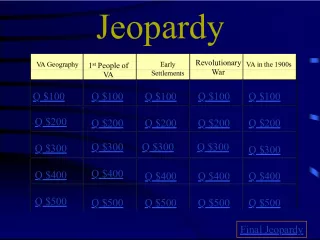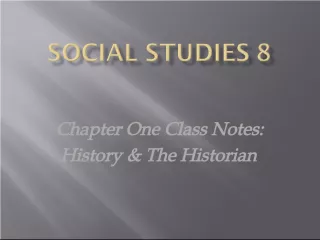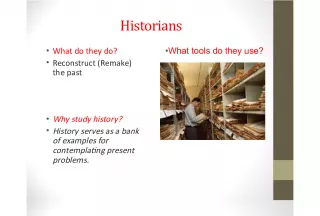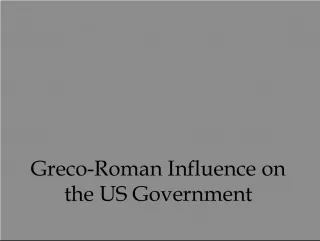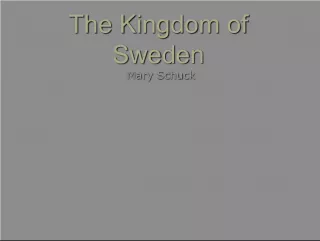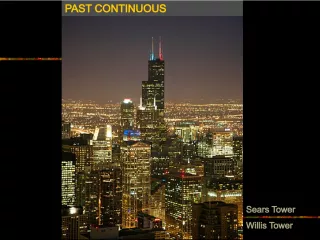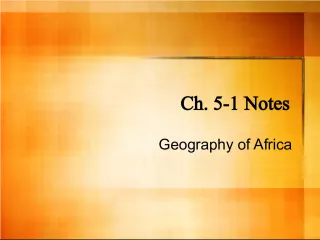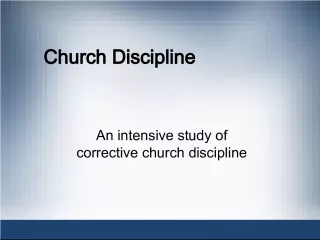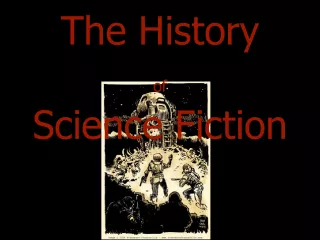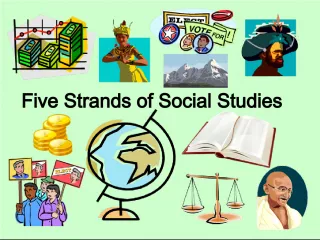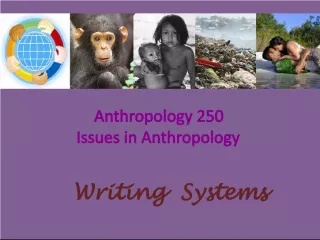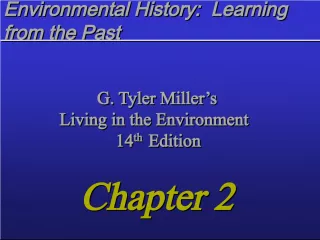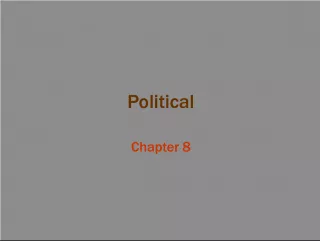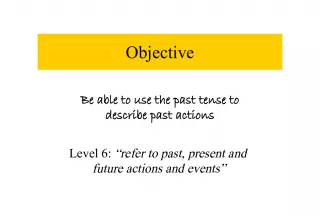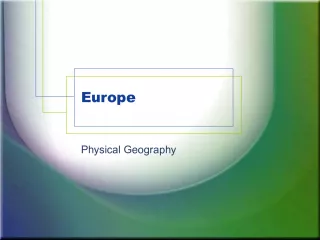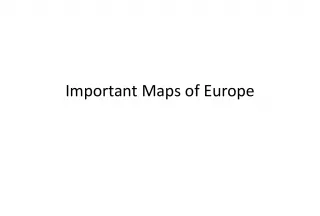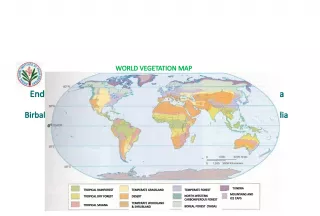Understanding Our Past: The Dawn of History, Beginnings of Civilization, Geography
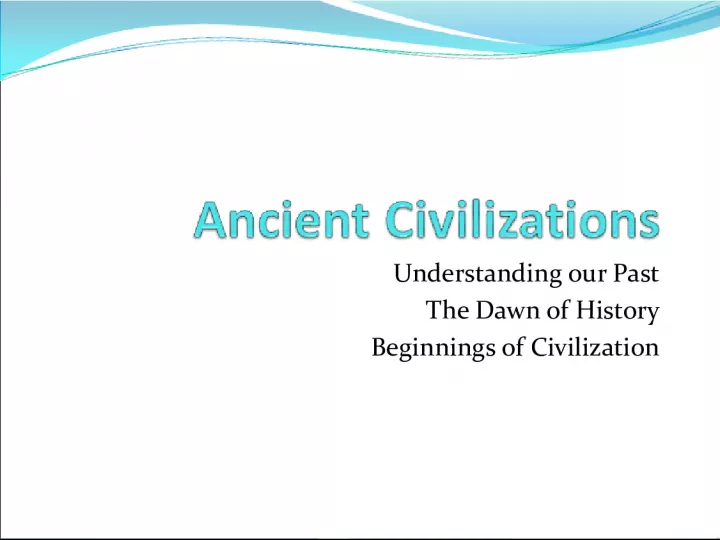

This topic delves into the study of human history, from the earliest known times to the beginning of civilization. It examines the geography and resources available to
- Uploaded on | 2 Views
-
 albert
albert
About Understanding Our Past: The Dawn of History, Beginnings of Civilization, Geography
PowerPoint presentation about 'Understanding Our Past: The Dawn of History, Beginnings of Civilization, Geography'. This presentation describes the topic on This topic delves into the study of human history, from the earliest known times to the beginning of civilization. It examines the geography and resources available to. The key topics included in this slideshow are . Download this presentation absolutely free.
Presentation Transcript
Slide1Understanding our PastThe Dawn of History Beginnings of Civilization
Slide2Geography The study of people, their environments and the resources available to them.
Slide35 Themes of Geography#1 LOCATION Location: Pinpoint the location of the place being studied- uses longitude- the east and west of the Prime Meridian and Latitude the distance north and south of the equator. “Where in the world are you?”
Slide4#2 Place What are the physical features of this location and the people who live there? “Why is that hairy guy jumping into the waterfall?”
Slide5#3 Human-Environment Interaction Humans are shaped by the environment in which they live Humans shape the environment in which they live Who needs trees when you can have Amazon Disney?
Slide6#4 Movement The transporting of people, goods and ideas from one place to another Pack up the recipe for Crusty Crab Burgers…we’re moving!
Slide7#5 Region Divisions in the world that share a common theme: Geographers can divide the world by physical characteristics, political, economic or cultural features
Slide8Prehistory A time before writing was invented No cities, governments or complex inventions
Slide9Anthropology Studies the origins and development of societies and people Different specialties within the field Cultural in this field means life of a society is handed down between generations
Slide10Archaeology A branch of anthropology that studies past people and cultures Archaeologist examine artifacts from the past to understand how people lived Rely on Technology
Slide11Technology From an archaeological point of view technology refers to the skills and tools people use to meet their needs
Slide12The Old Stone AgePaleolithic Age Dates from about 2 million BC- to the first stone tools 10,000 BC Period ends with the introduction of farming Broken into 3 eras Early (Lower) Paleolithic 2 million -250,000 years ago Middle Paleolithic 250,00-45,000 years ago Late (Upper) Paleolithic 45,000 – 20,000 years ago (cave drawings)
Slide13Paleolithic People Hunters and gathers Nomads- they moved from place to place- following the herds and vegetation Stone Tools from the Lower Paleolithic Period—Olduvai Gorge Tanzania
Slide14Paleolithic Religion Evidence of animism has been found Belief that everything living and inanimate has a spirit and soul Considered the oldest religion Example Cave paintings asking spirits for help with a good hunt
Slide15Mother Goddess Mother Goddess ensures the continuation of the clan
Slide16Agricultural Revolution Leads To NeolithicAge The ability to farm transformed Paleolithic people into the Neolithic age Began about 11, 000 years ago in the Middle East Nomadic lifestyle was abandoned Domestication of animals Increase in Population Specialization in work
Slide17Farming Domestication of animals Increase in Population Specialization in work force Increase in new technologies (calendars, woven cloth, stone axes)
Slide18Beginnings of Civilization A civilization is a complex, highly organized social order. Earliest civilizations began along rivers
Slide19Tigris – Euphrates RiversModern Day Iraq
Slide20Nile River Valley
Slide21Indus Valley Civilization- India- PakistanRegion
Slide22Yellow River- China
Slide23Civilizations in the Americas Incas, Aztecs emerged in the highlands of Peru and Mexico Focus was religious centers
Slide24Features of a Civilization Despite arising in different parts of the globe all ancient civilizations shared 8 features
Slide25#1 Cities At the heart of all civilizations was a major city Ruins of Harappa- Mohenjo-Daro Region of India
Slide26#2 Organized Government As society become more complex city governments were needed to organize society First Priests then warrior kings became political leaders
Slide27#3 Complex Religions Polytheistic Neolithic People believed in multiple gods Sumerian Ziggurat – in modern day Iraq
Slide28#4 Job Specialization No longer needed everyone to hunt and gather Increased population allowed people to specialize in certain crafts– many became artisans
Slide29#5 Social Classes Specialization led to classes People were ranked by their jobs Priests and nobles usually at the top Wealthy merchants Artisans Peasant Farmers –lived by the city in outlining villages
Slide30Social Hierarchy Priests Merchants Artisans Peasant Farmers
Slide31#6 Arts and Architecture Expressed the beliefs and values of the people Buildings were a sign of wealth and strength
Slide32#7 Public Works Building projects that support the city Irrigation systems, roads, bridges and defensive walls
Slide33#8 Writing Priests were the first to use writing Primary use for agriculture-record grain collected, accurate info about seasons Earliest was pictograms-simple drawings that looked like the objects they represented
Slide34Cultural Diffusion A civilizations grew so did trade and interaction with other people Cultural Diffusion is the spread of ideas, customs and technologies from one people to another. It occurs through trade, migration and warfare

